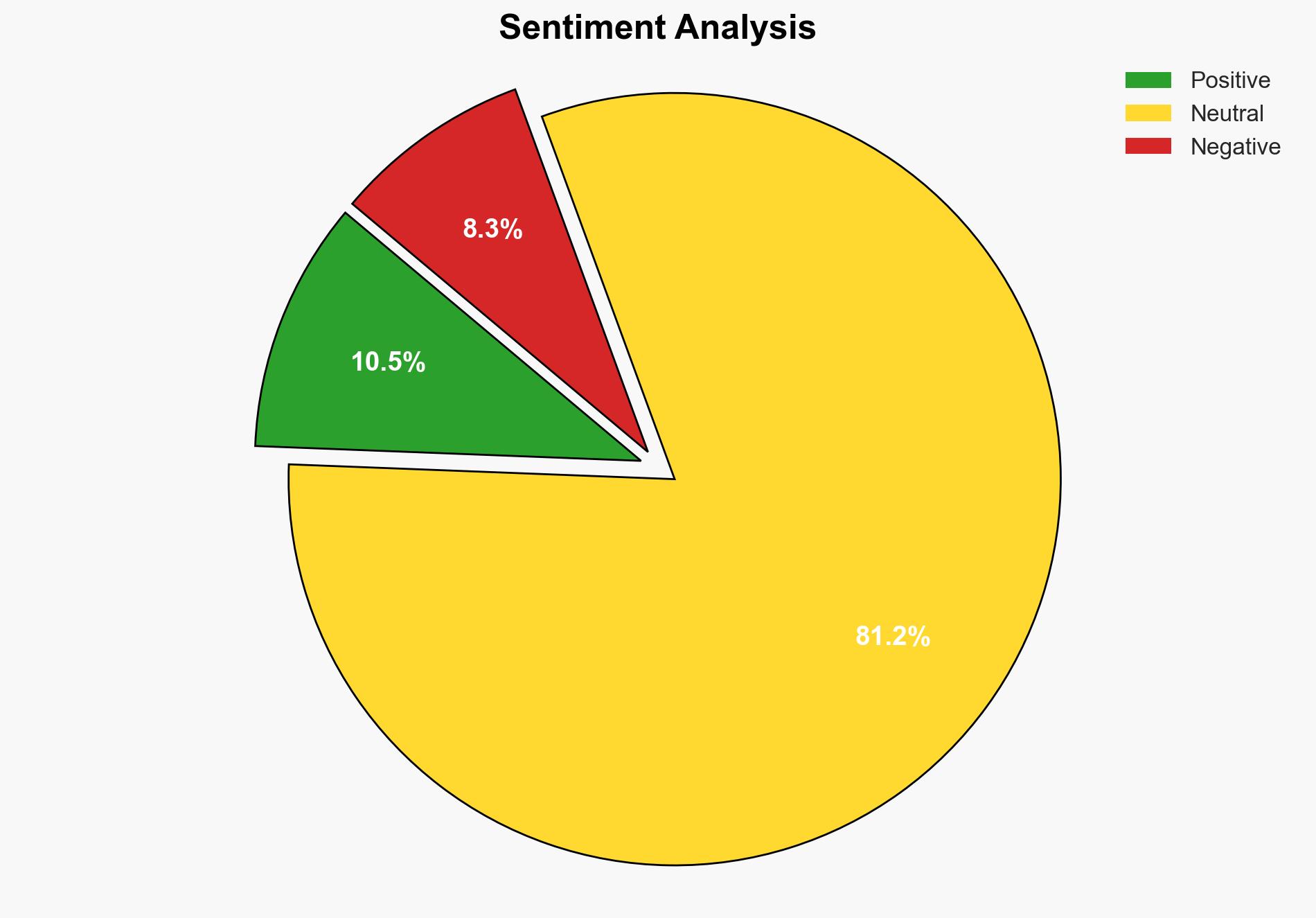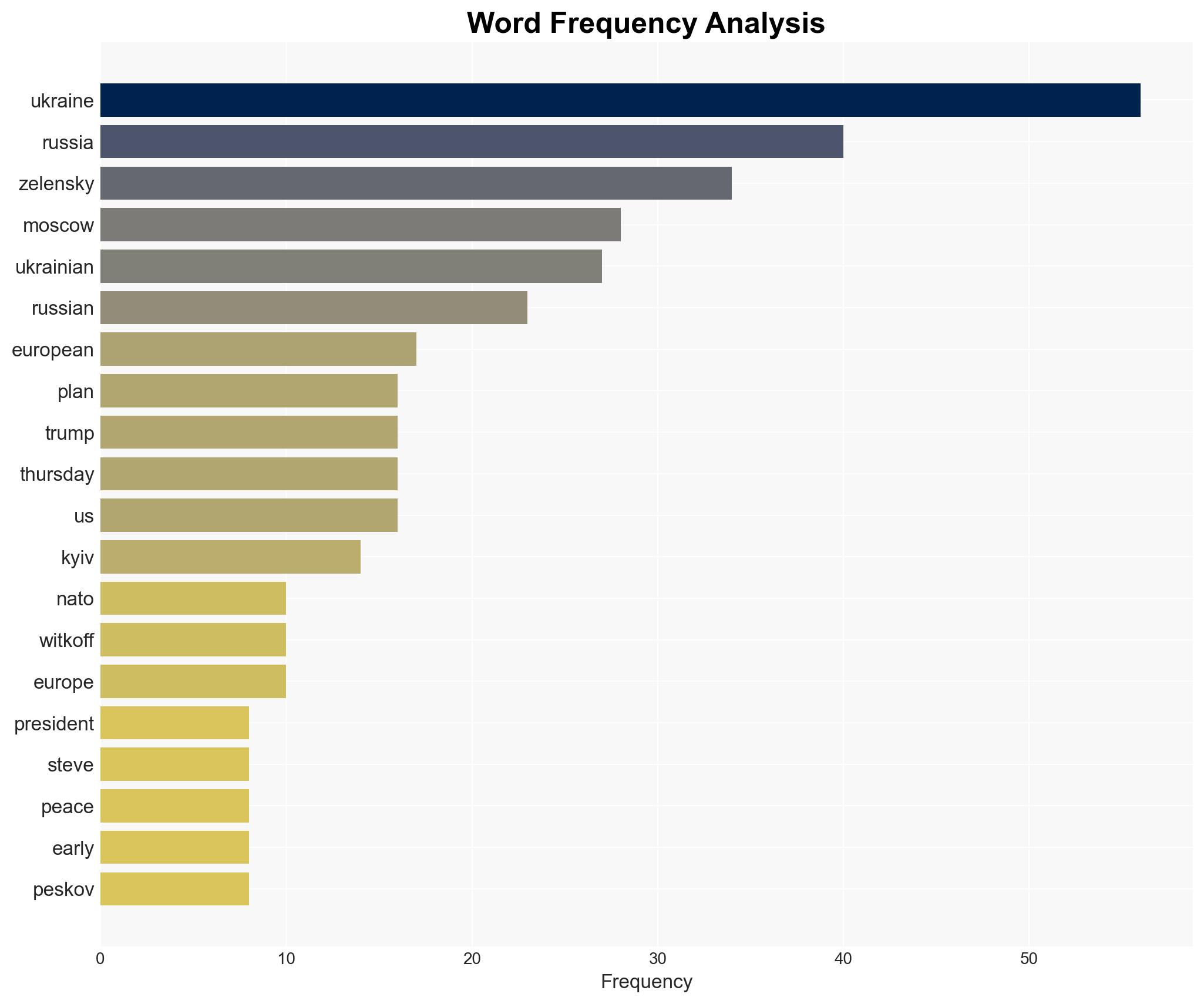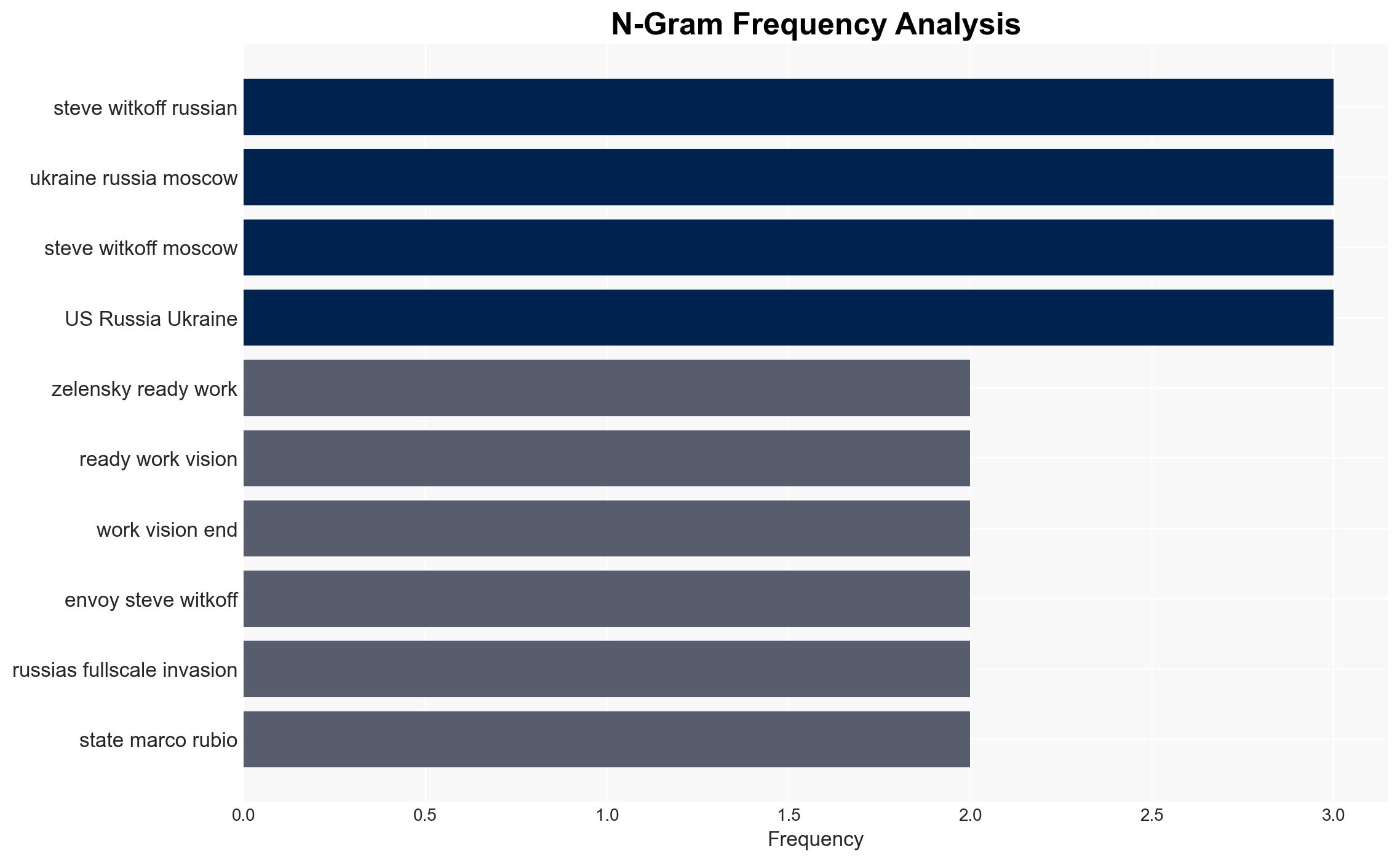Zelensky to speak with Trump after US proposes Russia-Ukraine peace plan – BBC News
Published on: 2025-11-20
AI-powered OSINT brief from verified open sources. Automated NLP signal extraction with human verification. See our Methodology and Why WorldWideWatchers.
Intelligence Report:
1. BLUF (Bottom Line Up Front)
The most supported hypothesis is that the proposed peace plan, heavily favoring Russian interests, is unlikely to be accepted by Ukraine without significant modifications. The strategic recommendation is to closely monitor the diplomatic engagements and prepare for potential shifts in U.S. foreign policy under domestic and international pressures. Confidence Level: Moderate.
2. Competing Hypotheses
Hypothesis 1: The peace plan is a genuine attempt by the U.S. to end the conflict, albeit with concessions to Russia, aiming to stabilize the region and reintegrate Russia into the global economy.
Hypothesis 2: The plan is a strategic maneuver by Russia, leveraging U.S. involvement to gain territorial and strategic advantages, while testing the resolve of Ukraine and its allies.
Hypothesis 2 is more likely given the plan’s alignment with Russian interests and the historical context of Russian negotiation tactics.
3. Key Assumptions and Red Flags
Assumptions: The U.S. is acting independently without undue Russian influence; Ukraine’s public rejection of the plan reflects its true stance.
Red Flags: The plan’s provisions heavily favor Russia, suggesting possible coercion or influence. The timing of the proposal amidst Ukraine’s domestic issues raises questions about its intent.
4. Implications and Strategic Risks
The peace plan could lead to increased political instability in Ukraine if perceived as capitulation. Economically, lifting sanctions on Russia could undermine Western leverage. Informationally, the narrative of a U.S.-Russia alignment might weaken NATO cohesion. Cyber threats could escalate as Russia tests NATO’s response capabilities.
5. Recommendations and Outlook
- Engage in diplomatic backchannels to ensure Ukraine’s sovereignty and territorial integrity are prioritized in any peace negotiations.
- Strengthen NATO’s eastern flank to deter potential Russian aggression.
- Best Scenario: A revised peace plan that respects Ukraine’s sovereignty and leads to a sustainable ceasefire.
- Worst Scenario: Ukraine’s internal destabilization and a fractured NATO response, emboldening Russian aggression.
- Most-likely Scenario: Prolonged negotiations with incremental progress, maintaining the status quo.
6. Key Individuals and Entities
Volodymyr Zelensky, Donald Trump, Steve Witkoff, Kirill Dmitriev, Karoline Leavitt, Rustem Umerov.
7. Thematic Tags
Regional Focus, Regional Focus: Eastern Europe, Russia-Ukraine Conflict, U.S. Foreign Policy
Structured Analytic Techniques Applied
- Causal Layered Analysis (CLA): Analyze events across surface happenings, systems, worldviews, and myths.
- Cross-Impact Simulation: Model ripple effects across neighboring states, conflicts, or economic dependencies.
- Scenario Generation: Explore divergent futures under varying assumptions to identify plausible paths.
Explore more:
Regional Focus Briefs ·
Daily Summary ·
Support us





